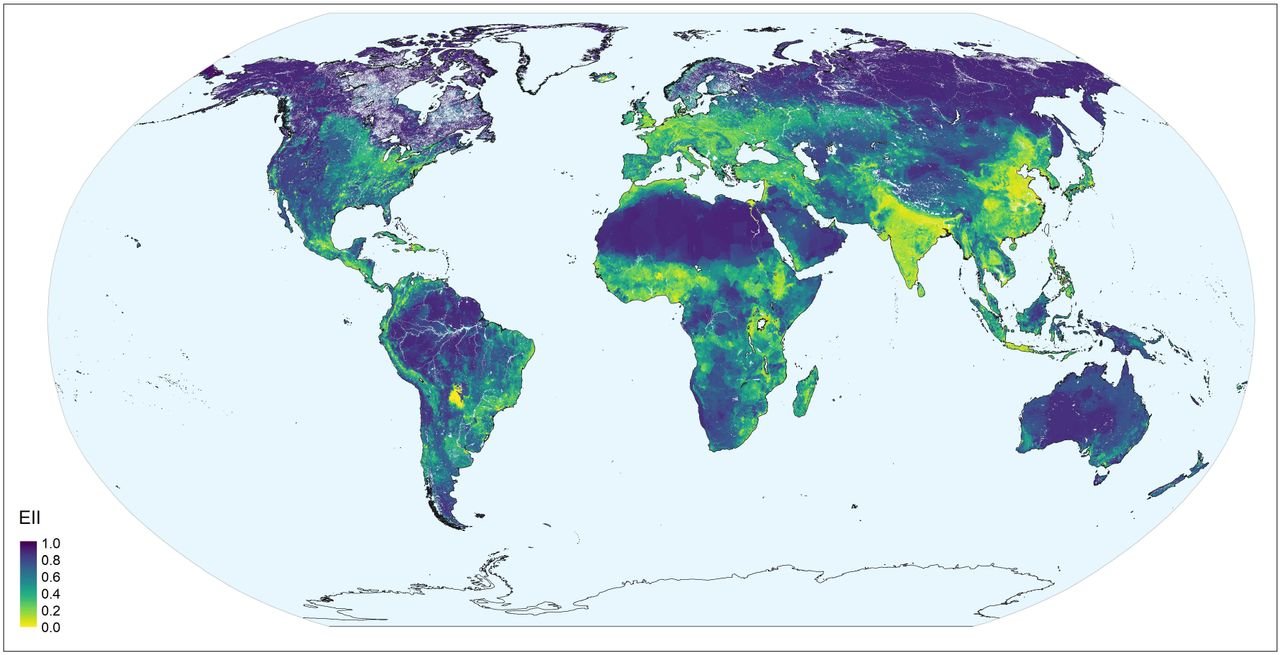
Ecological Integrity
Paris Agreement Article 6.8 links together climate mitigation and adaptation. The 6.8 mechanism is best designed to support holistic action in the land sector, aimed at improving ‘ecological integrity’.
The map above is taken from a WCMC publication. It shows a global index of ecological integrity. Yellow suggests areas strongly altered by human activity. By contrast, dark blue areas show relatively intact landscapes and ecosystems. For more about this work on ecological integrity see here.
CLARA partner Griffith University Climate Action Beacon is at the forefront of a global effort to focus on the importance of addressing climate change and biodiversity loss together, in the context of protecting and restoring land:
“Primary forests consistently have higher levels of ecosystem integrity and lower risk profiles than human-modified forests. This underscores the need to protect primary forest, develop consistent large-scale data products to indentify high-integrity forests, and operationalize a framework of eosystem integrity.” Read the Brief
“The Convention on Biological Diversity and the UNFCCC should implement a joint work programme to fully operationalise the ecosystem provision of the Paris Agreement. This should support and guide ecosystem-based and synergistic action in National Biodiversity Strategies & Action Plans (NBSAPs) and Nationally Determined Contributions (NDCs). We recommend that a joint CBD/UNFCCC SBSTA work programme.” Read the Brief
Researchers have suggested an improved system for carbon accounting that would better integrate carbon storage and biodiversity. “A holistic and comprehensive framework for carbon accounting is imperative to better inform [both] negotiations [and]… policies and actions for climate mitigation and biodiversity protection. The information in carbon accounts can help prioritise the most effective mitigation activities, assess progress towards targets for increasing carbon storage in the terrestrial biosphere…reduc[ing] the carbon concentration in the atmosphere, and guid[ing] effective integration of actions to address biodiversity loss and climate change.” Read the paper here.
CLARA’s most recent submission on Article 6.8 highlights the need to work synergistically with the Convention on Biological Diversity in advancing the protection and recovery of ecological integrity and resilience. “We need to create the best possible synergies between climate crisis mitigation, biodiversity protection and ecosystem-based adaption in the implementation of non-market activities, while integrating indigenous and traditional knowledge into the process.”

